La obra es una meditación física sobre la presencia y ausencia del cuerpo, a través de la arquitectura de La Concepción y otros conventos como un sitio temporal, espacion, una regulación coproreal. Nos hemos enfocado en particular en un pasage dentro de Las Capuchinas que une dos espacios: el convento y la iglesia, donde el pasaje aparece como un sitio de performance o restricción. Las dos estructuras físicas del pasaje, una abierta y virtual, la otra interior, masiva y atrancada, revelan diferentes auto-percepciones dentro del ritual de pasaje y ubicacipon que ocupa pla práctica diaria. Las instalaciones de sonido y video explicitamente lidian con éstos temas dentro de un espacio reverbatorio de pregunta y respuesta.
Tales prácticas se definen no sólo por nuestros propios cuerpos y las restricciones de arquitectura, pero también por la presencia y ausencia de otros. Asumimos presencia: la pérdida descubre la revelación de cómo nuestro cuerpo vive en el mundo a través de otros.
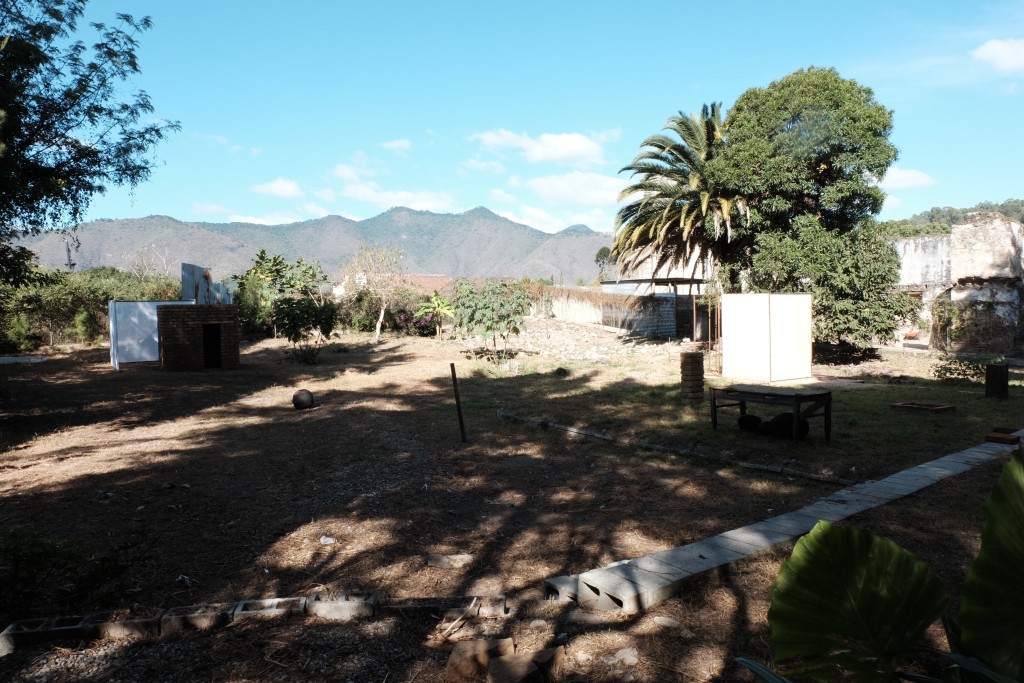
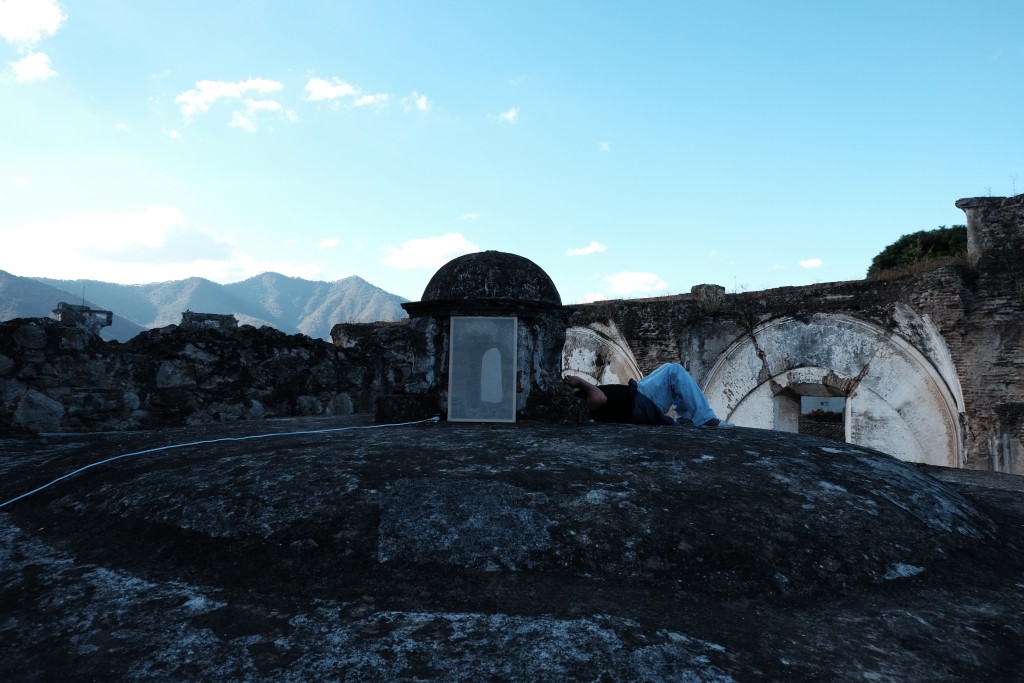

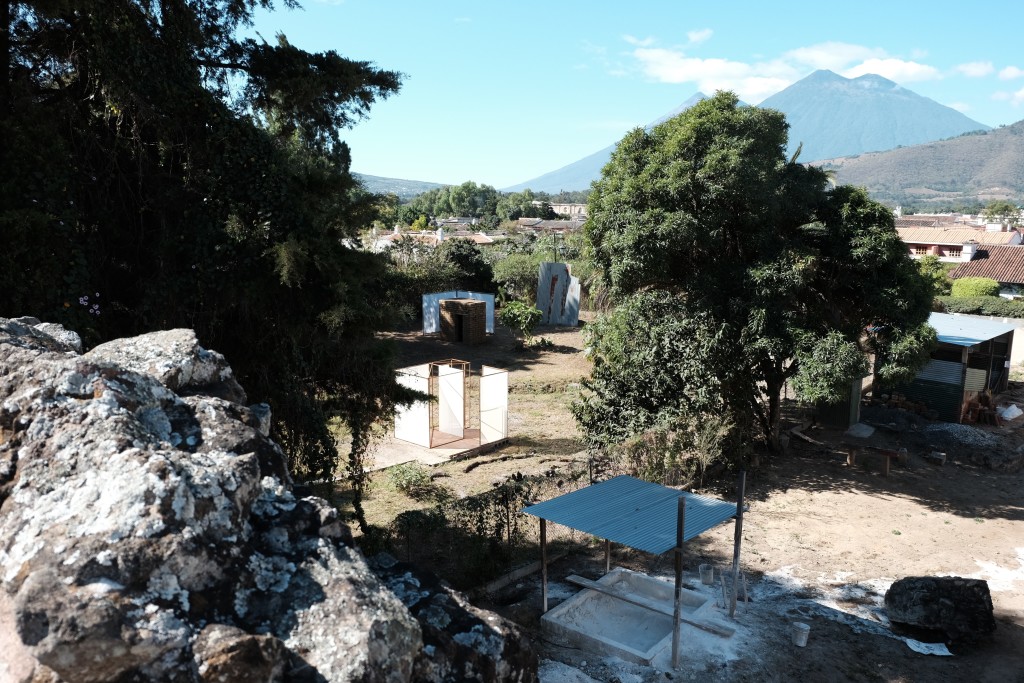
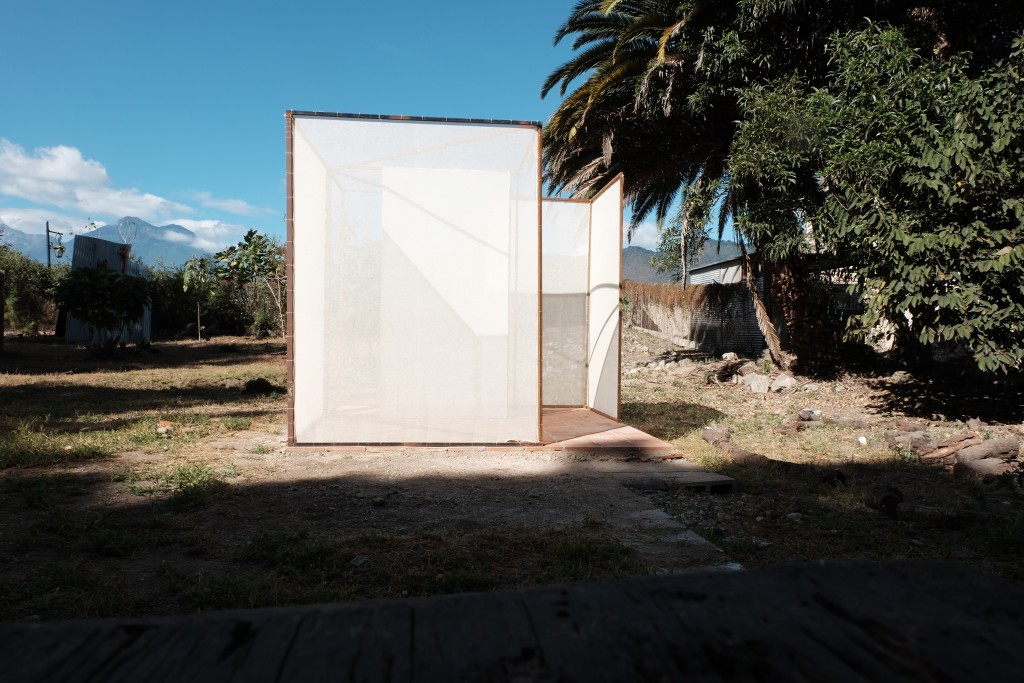
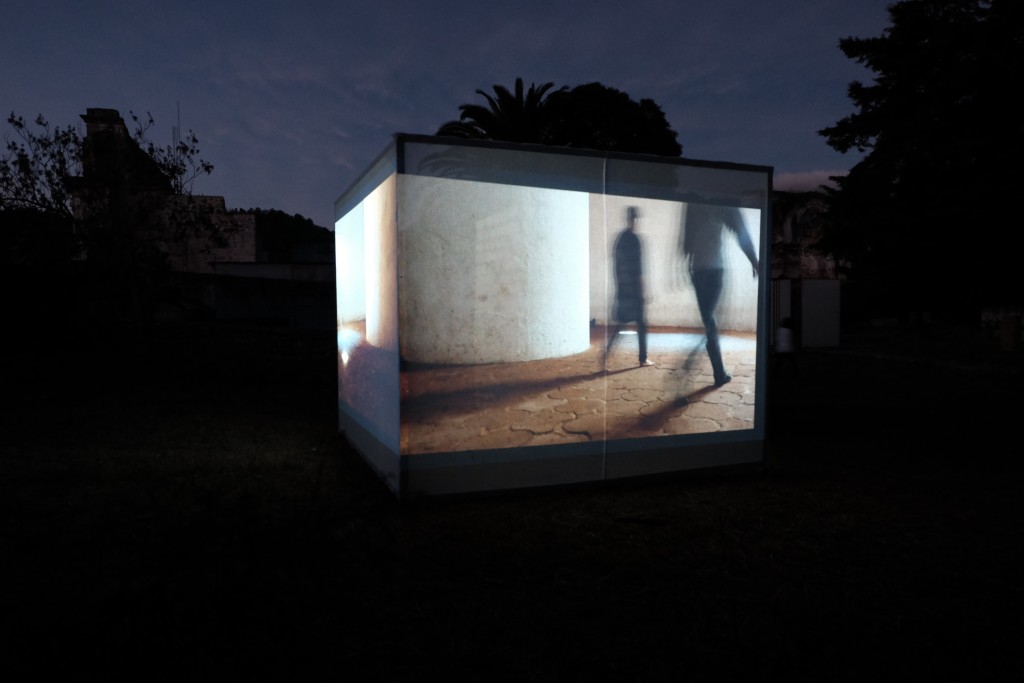

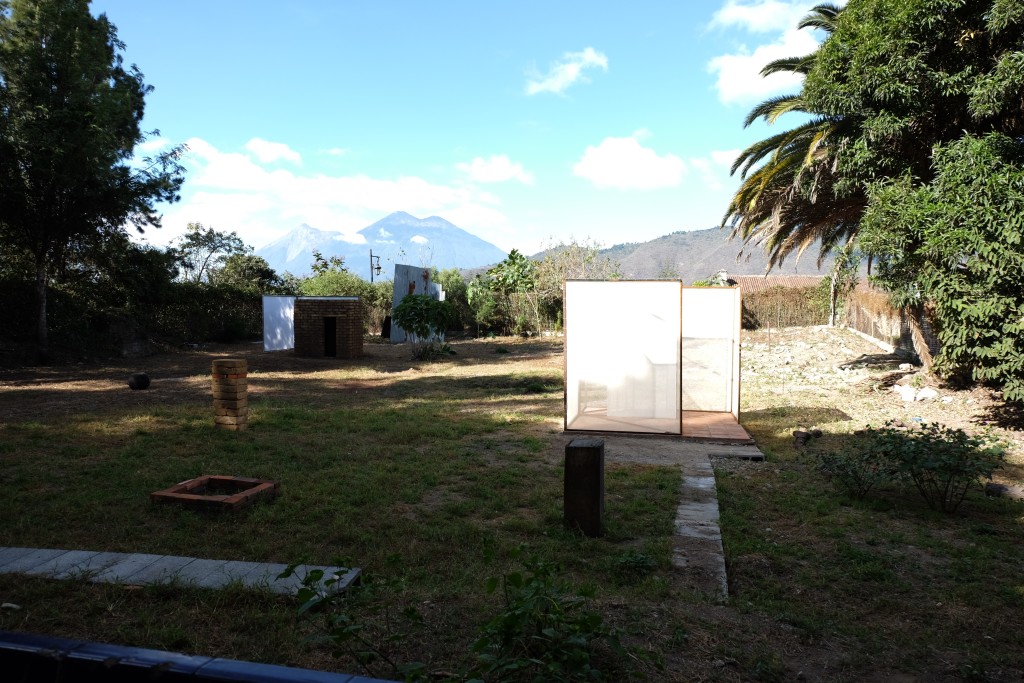
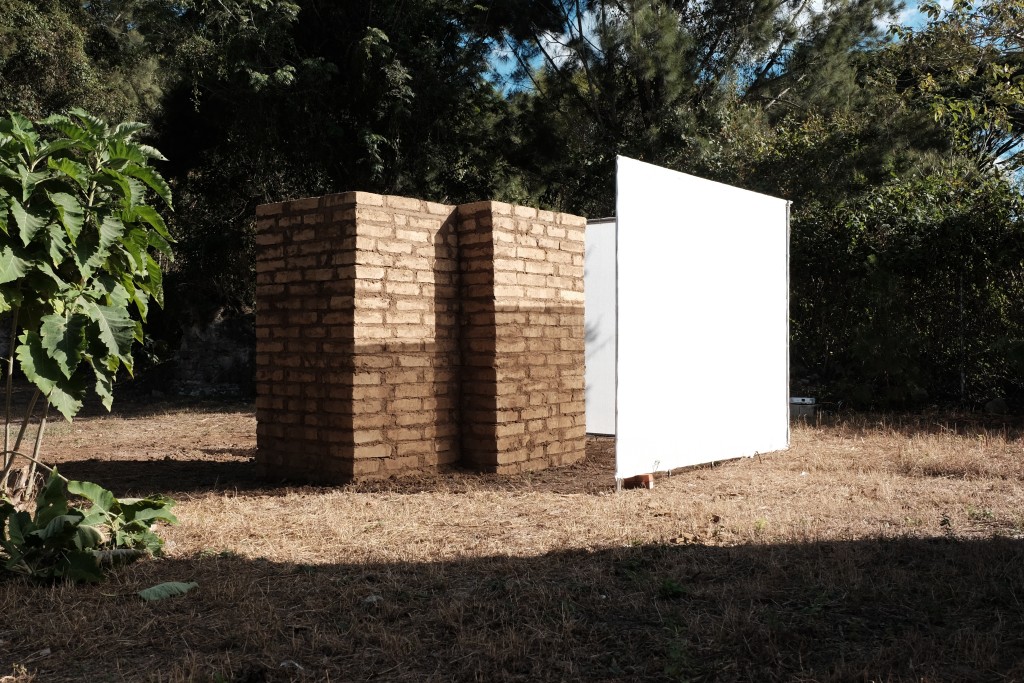
We find it to be significant that the site of C41 is located at the first convent of Antigua, La
Concepcion. The structure of the convent is a unique one that allows us to conceptually look at
social and spiritual structures and their practices of removal and community practices which are
enforced through architectural structure, construction methods, uniformity of dress and regulation
of bodily practice.
Because the cloister creates differentiated zones of activity it allows for a clarity of reading that
renders the tensions between the different areas of the social realm obvious. We are interested in
these structures that appear closed, but nevertheless create apertures for exchange, and as well
those structures that today seem more open but are actually not, trapped within a confusion of
boundaries and unclear readings. Thus, we seek to clarify places and functions, without ignoring
the subtleties and nuances of their intersections, nor by re-enacting the architecture of the convent
or its purposes, but rather making apparent through its metaphor the confusion between
boundaries and by focusing on its apertures and other sites of exchange, even if cloaked.
Membranes allow for exchange, and it is by pointing to this limnal site of exchange that we create a
sense of clarity for the viewer, one that is more often felt than reasoned. To move the body through
such membranes is to discern their implicit edges and points of slippage; to find apertures (points
of bridging between two zones) and to create a framework that allows such perception and its
affect on the body, much like walking though a foreign city.
The project will be to translate the subtleties and residues of space that still remain in the ruin into
to the more open territory of the site that now lacks the clarity of its previous relationship.
We would then be creating a series of objects, places, and constructions in the space that engage
the convent structure, mapping identifiable and confusing territories to provide clarity in
saying/seeing that these structures still exist now in our experience even where they are less seen.
Significantly, Sor Juana de Maldonado forms a question that is to the point: That by eliminating or
re-structuring her freedom in one aspect allowed her to delve into a different sort of freedom,
intellectual and not just social.